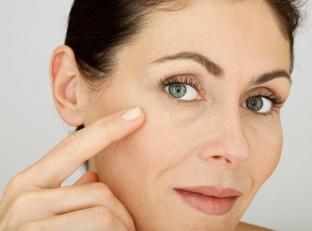No one wants to get old, and that's – fact. It has long been known that the desire to preserve youth for as long as possible is natural for every person, at least because the very word "youth" associated with the word "health". But, unfortunately, involutive processes in the body are irreversible, and the only way modern medicine can help – this is to slow down the aging process and mask their manifestations.
Fading skin – this is one of the earliest signs of the start of aging processes in the body. But you will be surprised to learn today on estet-portal.com what the beginning of aging of the human body depends on. About what conclusions scientists came to by studying the processes of skin aging – read on.
Why aging skin may not match true age
As you know, with age, metabolic processes slow down in the human body, which primarily affects the condition of the skin.
Recently, researchers have come to a surprising conclusion: skin aging and metabolic slowdown are NOT ALWAYS directly related to each other.
As it became known, the real "bone" age of the body and "skin" age diverge in almost 50% of women. At the same time, aging skin can add a woman as much as 15 years. Continuing to study the processes of skin aging, scientists were able to find out what explains such significant differences.
Aging Skin:
- fading skin: the main factors of aging;
- what processes occur in aging skin;
- determination of the aging skin correction scheme.

Aging skin: the main factors of aging
Fading skin – it is not only a genetically predisposed process of the body. As scientists have found out, there are several main factors in skin aging:
- fading of the body's metabolic processes due to a deficiency of vitamins, hormones, minerals and enzymes;
- insufficient skin hydration;
- formation of free radicals in the skin under the influence of UVR;
- change in the elastic properties of the skin;
- impaired microcirculation and changes in the state of blood vessels;
- disruption of skin cell regeneration processes.
In addition, external factors such as smoking, alcohol consumption, sleep and nutrition disorders, stress and temperature changes significantly affect the aging process of the skin, accelerating it and provoking earlier skin aging.
What processes occur in aging skin
Fading skin implies a whole cycle of processes occurring in it during this period. First of all, the Malpighian layer of cells in the epidermis becomes thinner and the stratum corneum thickens, which, as you know, consists of dead cells. Due to this, the renewal cycle of the surface layer of the skin is extended to an average of 45 days, while the normal duration of this cycle – approximately 27 days.
The result of this slow exfoliation of dead cells is hyperkeratosis and skin flaking. In the dermis, there is a qualitative and quantitative decrease in fibroblasts, as well as degradation of elastic and collagen fibers, which determine the severity of wrinkles and skin elasticity. In addition, in aging skin, the production of hyaluronic acid decreases, the moisture-saving properties of the epidermis change, resulting in dry skin.
Determining the scheme for correcting aging skin
To determine an effective scheme for the correction of aging skin, it is necessary, first of all, to diagnose the condition of the skin according to several basic parameters:
- skin greasiness level;
- skin moisture level;
- skin profile;
- pH-metry;
- elastometry;
- degree of regeneration.
Depending on the results of diagnostic studies and correlation with external manifestations of aging, an effective scheme and stages of correction of aging skin are determined. With changes in moisture indicators, hydrating preparations are recommended; at the first signs of a change in skin elasticity and turgor, it is necessary to recommend to the patient agents that affect the properties of elastic and collagen fibers, in the presence of pronounced wrinkles – preparations and procedures aimed at eliminating the main signs of skin aging are recommended.







Add a comment